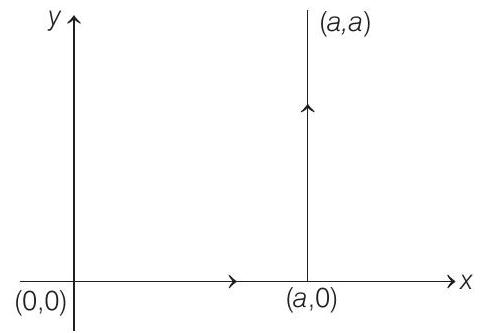Work Power and Energy 1 Question 6
7. A force
(a)
(b)
(c)
(d)
(1998, 2M)
Show Answer
Answer:
Correct Answer: 7. (c)
Solution:
Alternate Answer
While moving from

The first component of force,
The second component of force i.e.
NOTE In the given force, work done is path independent. It depends only on initial and final positions. Therefore, first method is brief and correct






